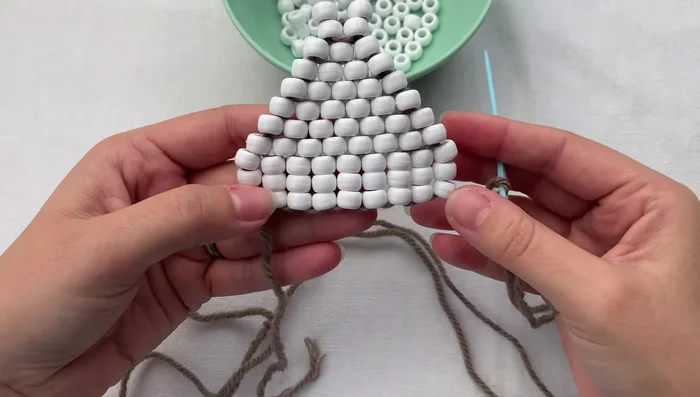Are you ready to elevate your jewelry game with a touch of handmade charm? Brick stitch, often perceived as an advanced beading technique, can actually be surprisingly accessible for beginners! This tutorial focuses on creating stunning fringe earrings using the simplest brick stitch method, perfect for those just starting their beading journey. Forget complicated patterns and frustrating knots; we'll guide you through a straightforward process that yields beautifully textured and elegant earrings. You'll be amazed at how quickly you can master this technique and create unique pieces to wear or gift.
These easy-to-follow instructions will show you exactly how to make these eye-catching earrings, transforming simple beads into a stylish accessory. Get ready to unleash your creativity and discover the satisfying world of brick stitch beadwork – let’s dive into the step-by-step process!
Preparation and Safety Guidelines
- thread
- needle
- beads
- Always supervise children when working with small parts like beads and findings. Ingestion can be dangerous.
- Use sharp scissors or wire cutters to avoid injuring yourself when cutting thread or wire. Cut away from yourself.
- Be mindful of allergies. Some bead materials or findings may cause skin irritation. If you experience any discomfort, discontinue use immediately.
Step-by-Step Instructions
Starting a New Fringe
- Start with a new thread. Thread your needle and go through the second or third row of your foundation beads, leaving a 3-4 inch tail.
- Weave through one of the beads in your brick stitch foundation.
- Pick up one of the little loops just under the foundation beads and push your needle through to create a loop with your thread.
- Tie a double knot to secure the loop. Grab the loop, thread your needle through once, wrap around, and pull tight.




Starting a New Fringe - Weave the tail back through the foundation beads to hide it.

Starting a New Fringe Creating the Fringe
- 10 beads).
- Bring the beads to your work, skip the last bead, and weave the needle through all the beads. Then, go back up and through the foundation beads.


Creating the Fringe Adding More Fringes
- Repeat steps 6 and 7 to create multiple fringes, adjusting tension to prevent gaps or stiffness.

Adding More Fringes Securing the Last Fringe
- To tie off, after completing your last fringe, move your beads up, skip the last bead, and go through the beads up to the foundation.
- Adjust the fringe to remove slack, then take your needle from back to front through the fringe section, creating a loop and tying a double knot.
- Weave the remaining thread through the foundation to hide and secure it. Trim excess thread.



Securing the Last Fringe
Read more: DIY Tiered Tassel Earrings: A Quick & Easy Jewelry Tutorial
Tips
- Adjust tension carefully to prevent gaps or stiffness in the fringe. Too loose shows the thread, too tight restricts movement.
- If your needle gets stuck in the foundation, try a smaller needle or thread.










